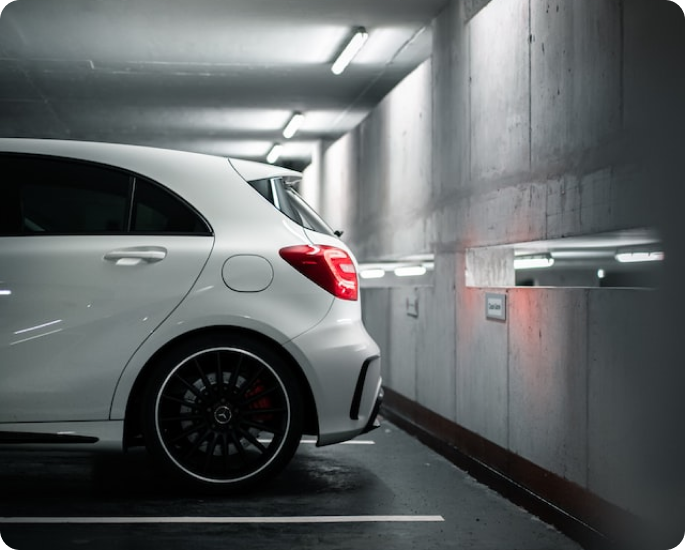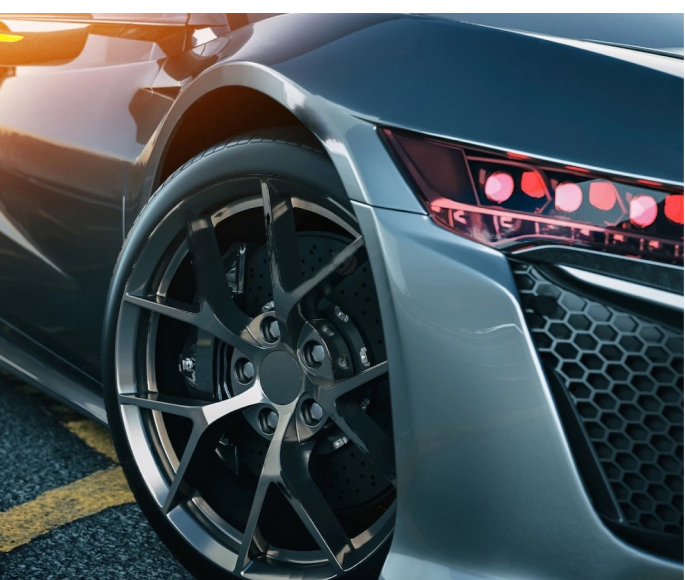FRONT AND REAR PARKING SENSORS
FRONT AND REAR PARKING SENSORS
WHY IS PARKING A PAIN ?
- Poor visibility, especially in larger vehicles, is regarded as a major threat to safety.
- A driver’s awareness of people or objects may be hindered by various factors.
- The lack of functioning equipment on the vehicle, such as badly positioned mirrors or non-functioning CCTV cameras etc.
-
Environmental noise or the noise of the vehicle when it is reversing can also
be a distraction. - Driver distraction from activity nearby the vehicle can result in
- Environmental conditions such as poorly laid out sites or poor weather can hinder the driver’s visibility.
- The risks are increased when the vehicle is reversed at an inappropriate speed.
- Children and the elderly are particularly vulnerable to being injured or killed in vehicle collisions.

- Poor visibility, especially in larger vehicles, is regarded as a major threat to safety.
- A driver’s awareness of people or objects may be hindered by various factors.
- The lack of functioning equipment on the vehicle, such as badly positioned mirrors or non-functioning CCTV cameras etc.
-
Environmental noise or the noise of the vehicle when it is reversing can also
be a distraction. - Driver distraction from activity nearby the vehicle can result in
- Environmental conditions such as poorly laid out sites or poor weather can hinder the driver’s visibility.
- The risks are increased when the vehicle is reversed at an inappropriate speed.
- Children and the elderly are particularly vulnerable to being injured or killed in vehicle collisions.

Technology To Assist Drivers When Parking
The most common cause of fleet insurance claims is low-speed collisions caused by blind spots and tight parking lots. The problems associated with blind spots while moving a vehicle in reverse have long been recognized. There have been repeated accidents associated with vehicles backing up, involving personal injury and damage to property. As vehicles are generally operated by one person, drivers will often back up without adequate visibility to the rear. Even the presence of a passenger who can help in spotting obstacles or a person standing behind the vehicle to guide the driver does not wholly eliminate the blind spot for the driver.
Technical aids to improve vision to the rear by short-range obstacle or target detection and distance measurement have, therefore, been developed in recent years and introduced into the market. These devices generally fall into three categories:
(i) optical systems using image sensors, infrared light, video, or laser devices.
(ii) conductivity measurement systems, and
(iii) ultrasound systems.
CAR PARKING SENSORS

You'll Get Audible Warnings If There Are Obstacles In Your Way When Reversing.
Even the presence of a passenger who can aid in obstacle detection or a person standing behind the vehicle to guide the driver is insufficient.
- The best driver sensors for manoeuvring
- The buzzer begins to sound gradually at about 1.5 meters.
- The buzzer becomes louder as you get closer.
- The buzzer sounds continuously at around 0.5 meters.
CAR PARKING STEPS
What is its function?
This feature can detect objects in front and back of a car while parking, providing audible alerts if one or more objects are detected. Front and rear parking sensor systems prevent parking scrapes and bumps by detecting obstacles around your vehicle, including the ones you can’t see from the driver’s seat, and providing a warning to the driver, giving you time to avoid an accident and park safely every time. Rear parking sensors reduce reversing crashes by 18% or more.

What is its function?
This feature can detect objects in front and back of a car while parking, providing audible alerts if one or more objects are detected. Front and rear parking sensor systems prevent parking scrapes and bumps by detecting obstacles around your vehicle, including the ones you can’t see from the driver’s seat, and providing a warning to the driver, giving you time to avoid an accident and park safely every time. Rear parking sensors reduce reversing crashes by 18% or more.


The Technology Behind It

What Is In The Kit?

Car Sensors Features
When the reverse gear is selected, the light automatically turns on.
Ultrasonic sensors in the front and back bumpers of the car can detect objects within a set range with adjustable sensitivity.
Four bumper-mounted sensors
This feature can detect objects in front and back of a car while parking, providing audible alerts if one or more objects are detected.
22.5mm detachable heads for easy service or vehicle repair.
Front and rear parking sensor systems prevent parking scrapes and bumps by detecting obstacles around your vehicle, including the ones you can’t see.
Control module - 2 Wire connection
The problems associated with blind spots while moving a vehicle in reverse have long been recognized. The most common cause of fleet insurance claims is low-speed.
A very loud buzzer
Even the presence of a passenger who can help in spotting obstacles or a person standing behind the vehicle to guide the driver does not blind spot the driver.
It is finished in black but can be painted to match your vehicle.
Technical aids to improve vision to the rear of shortrange obstacle or target detection and distance measurement have, therefore, been developed in recent years and
NOTE :
Reversing sensors are a driving aid and the usual driving precautions should be taken whilst reversing. Sensors may not detect all possible objects or obstructions. Detection distances are approximate.
Car Sensors Features
When the reverse gear is selected, the light automatically turns on.
Ultrasonic sensors in the front and back bumpers of the car can detect objects within a set range with adjustable sensitivity.
Four bumper-mounted sensors
This feature can detect objects in front and back of a car while parking, providing audible alerts if one or more objects are detected.
22.5mm detachable heads for easy service or vehicle repair.
Front and rear parking sensor systems prevent parking scrapes and bumps by detecting obstacles around your vehicle, including the ones you can’t see.
Control module - 2 Wire connection
The problems associated with blind spots while moving a vehicle in reverse have long been recognized. The most common cause of fleet insurance claims is low-speed.
A very loud buzzer
Even the presence of a passenger who can help in spotting obstacles or a person standing behind the vehicle to guide the driver does not blind spot the driver.
It is finished in black but can be painted to match your vehicle.
Technical aids to improve vision to the rear of shortrange obstacle or target detection and distance measurement have, therefore, been developed in recent years and
NOTE :
Reversing sensors are a driving aid and the usual driving precautions should be taken whilst reversing. Sensors may not detect all possible objects or obstructions. Detection distances are approximate.
WHAT YOU NEED TO DO ?

What do you need to do?
- The intervals between beeps become shorter the closer the car is to an object.
- Low-toned beeps indicate objects are detected near the rear bumper.
- High-toned, continuous beeps indicate objects are detected near the front bumper.
- Listen for any audible warnings that there are objects in front of behind you as you are parking.
Using for car sensor tips
- Don’t fully rely on parking sensors to detect all objects in your parking path. They may not detect objects that are flat on the ground, below the bumper, too close to the car, or too far from it.
- Make sure the sensors are clear of any obstructions on the bumpers, such as snow or dirt.
- Stay aware of your surroundings while parking, including people or objects that may enter the parking path.

ENQUIRY SERVICES
We are determined to re-shape the way car owners feel about their companions. We offer unbeatable customer service and respond intuitively to your individual car care needs in a way that’s effective, efficient, and professional.




